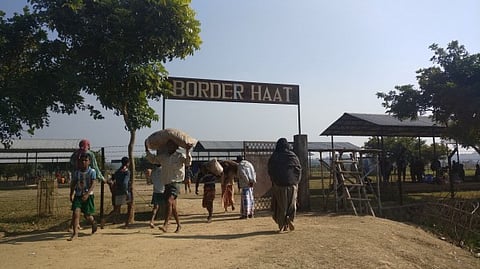Trading at the edge
Somewhere along the Jinjiram River – where Baliamari in Rangpur Division meets Kalaichar in Meghalaya – a haat (market) comes to life every Wednesday, where one can trade in Indian Rupees or Bangladeshi Takas, or just barter in goods. Located on the northern half of the India-Bangladesh border, this trading post has been a regular fare for people living in either side of the river, ever since the haat was opened in 2011.
The Baliamari-Kalaichar border haat is among a few common marketplaces that have been in operation since 2011, after Bangladesh and India agreed to open them to promote local trade and revive markets whose history stretches back to 1972, and in some cases, to the Mughal era. Closed down during Partition, some of these haats were reopened after the 1971 liberation of Bangladesh, but again abruptly closed, becoming a victim of the heavy securitisation of India's border with Bangladesh.

